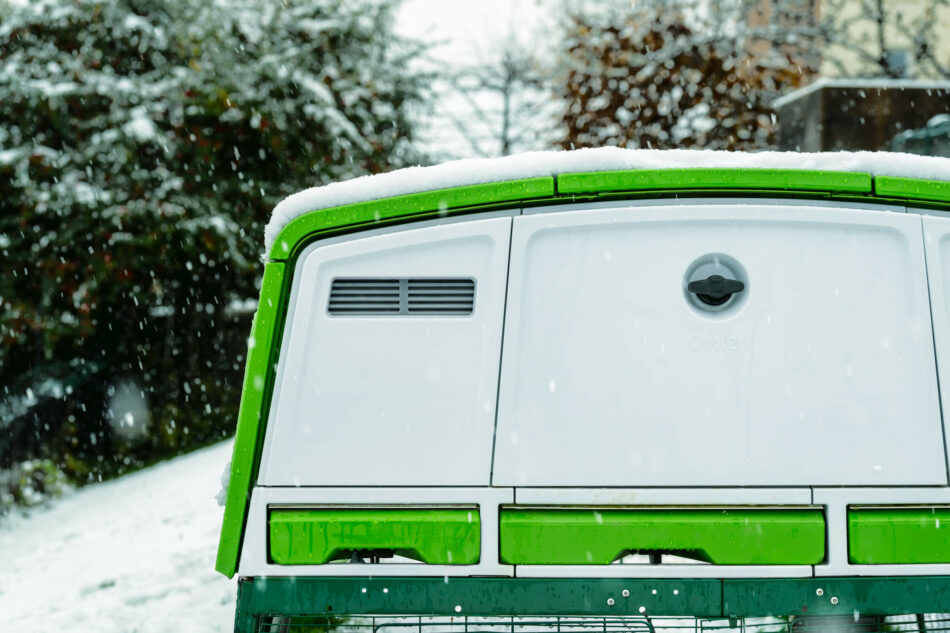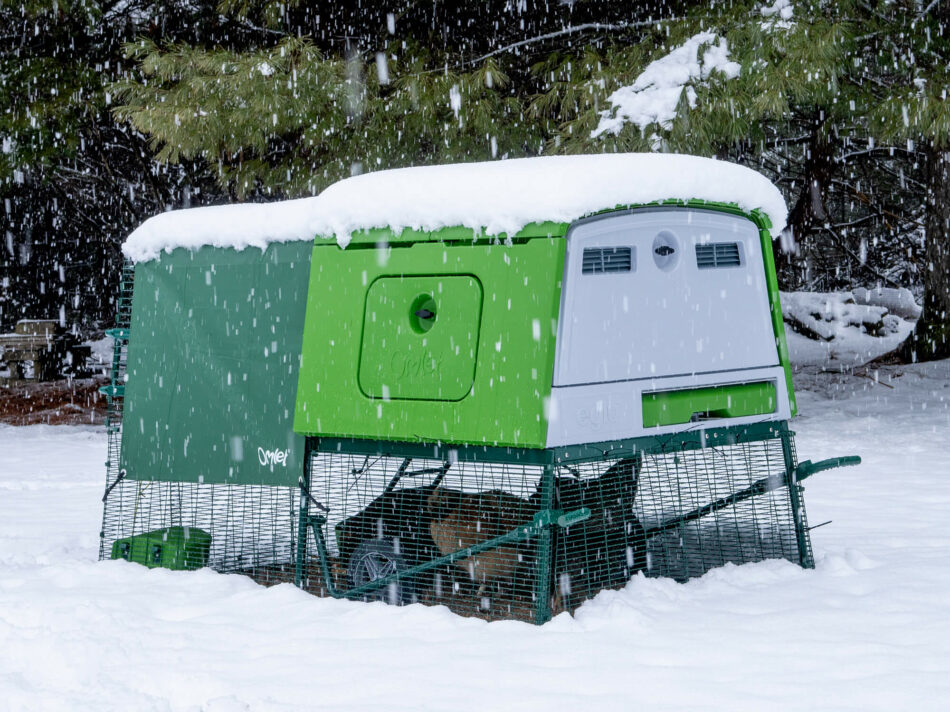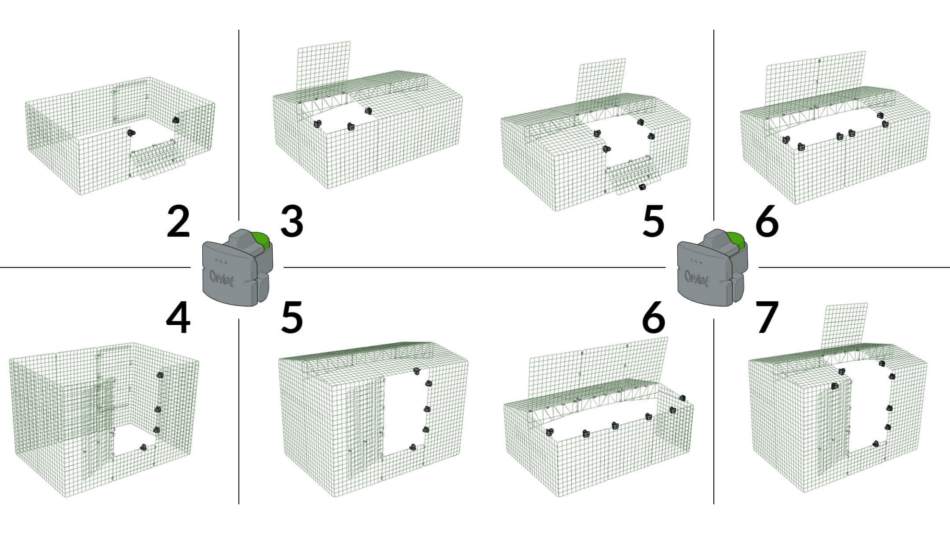10 things to avoid as a winter chicken keeper
Winter brings unique challenges for chicken keeping, and avoiding common pitfalls can help keep your flock healthy and thriving. In this guide, we’ll discuss the 10 things to avoid as a winter chicken keeper, helping you navigate the season with confidence and care. From managing coop conditions to understanding your hens’ needs, these insights will ensure you’re prepared for the cold months ahead.
What to avoid this winter
Knowing what to avoid is as important as knowing the right things to do when caring for your chickens. Preparing for winter is a necessary task when tending to your flock, but there are some things that may be overlooked or misunderstood about winter chicken-keeping. Here’s what not to do this season.
-
Don’t coop your chickens up
Chickens are built to be outside, and they’re known for withstanding cold temperatures. In fact, a hens’ normal temperature runs around 40.5°c, so enduring the cold is much easier for them than the heat. And, underneath a chicken’s shiny plumage lies dense, downy feathers to insulate them — courtesy of your flock’s annual moult that takes place in the fall.
While it may be tempting to keep your chickens fully enclosed in their coop, they’ll quickly become bored and agitated. Instead of keeping a lock and key on their coop, open their coop door after the sun has been up for a couple of hours to help warm their environment, or program your Smart Autodoor to open at a specified time. Invest in chicken run covers to prevent snow and ice from accumulating, and offer plenty of chicken perches to help warm their feet up off of the frozen ground. With these provisions in place, your flock will be well supported outside of their coop.
-
Don’t make their coop airtight
Another common mistake chicken keepers make is trying to seal their chicken coops. Your flock needs fresh air to circulate throughout their coop to prevent moisture buildup and respiratory illness. Insulated chicken coops keep the harsh elements out while still allowing for the right amount of air circulation to prevent these issues.
Drafts are a valid concern in the winter, but well-designed ventilation will not allow for cold drafts to permeate the coop. Even with extreme temperature chicken coop jackets, Omlet’s Eglu Chicken Coops allow just the right amount of fresh air to circulate without creating dangerous drafts. Now that’s a breath of fresh air for winter chicken-keeping.
-
Don’t offer supplemental heat
Chickens are hardy and will adapt to the lower temperatures as they gradually decline. If their coop is heated, they will miss out on this natural process, and will be shocked — quite literally — if they stride out into freezing temperatures from a balmy coop. This sudden, extreme change in temperature can cause a chicken to go into shock and can result in the death of your flock.
Heat sources are also a fire hazard, and should not be used without being closely supervised. Brooder plates, heat lamps, or heating pads are appropriate for sick flock members or young chicks, but should be used only in dire situations for healthy hens. Extra insulating bedding like straw or hay can be added to nesting boxes and roosting areas to provide additional warmth in lieu of electric heat sources.
-
Don’t leave eggs in the coop
While it may be easy to remember to gather eggs in the dog days of summer before they spoil, it’s important to gather eggs quickly when the temperatures reach freezing. Eggs shouldn’t be left in the coop for more than a couple of hours if the temperatures are below freezing. A frozen egg isn’t ruined, but the contents will expand the longer it’s allowed to freeze, which will crack the shell. Once the shell is compromised, bacteria can enter the egg freely, making it inedible.
Get into the habit of looking for and collecting eggs each time you visit the coop. This is a good rule in any season, but especially during periods of extreme temperatures.
-
Don’t forget their water
Chicken waterers can quickly turn to popsicles when the temperatures reach freezing. You’ll need to break the ice in a very literal way throughout the day for your flock to maintain their water source. Pouring warm water over frozen waterers can also thaw them, or consider using electric bird bath heaters or other types of submersible heaters in their waterers. Be sure to keep cords and components out of your flock’s reach.
Putting a floating object in their water like a tennis ball can also help prevent ice from forming. The constant movement will break up the ice formation so it won’t be able to freeze solid. This has mixed results based on the size of the object, amount of wind, and other factors, but it’s a safe method to experiment with.
-
Don’t put off cleaning the coop
Before the temperatures plummet, give your chicken coop a deep clean. This will allow you to use a pressure washer without the threat of ice one last time before the freeze sets in. Refresh the bedding with thick, warm bedding like shavings or straw, and check to make sure runs covers are adjusted and secure.
Once it’s impractical to clean with water, you can keep your coop clean with a rag or stiff bristled brush. Empty the droppings trays as usual, and brush off any debris from their roosting and nesting areas. Keeping your chickens’ coop fresh and clean will promote good respiratory health over the winter.
-
Don’t limit their fun
Your chickens may not venture as far from their coop as before, largely because of the lack of insects or vegetation to pique their interest. If your property becomes covered with snow or ice, it can put an even bigger damper on their fun. To combat this potential for boredom, make sure your hens have plenty to do to occupy their days.
Chicken perches, peck toys, treat holders, or a Chicken Swing are all elements that transform winter days from dull to delightful. Use them in their run, or out in their free-ranging space to create pockets of fun in an otherwise frozen world. It’ll cheer your heart along with your hens.
-
Don’t go easy on the feed
Your chickens will be hungrier during the winter months. The increased demand for body heat requires their already-fast metabolisms to work harder. With these larger appetites, you can expect to fill their chicken feeders more often.
Your flock will also appreciate extra treats and nutrition during this time. Add dried mealworms or soldier fly larvae to their scratch grains, offer alfalfa hay, or make them a warm chicken mash to help satisfy their cravings.
-
Don’t forget combs and wattles
Any chickens can fall victim to frostbite, but hens with large combs and wattles are especially at risk. Signs of frostbite on a chicken’s comb or wattles include:
- Pale or white appearance
- Black spots or sections
- Misshapen edges
Petroleum jelly applied to these parts will help prevent frostbite from forming. Frostbite isn’t deadly to chickens, but it is uncomfortable, and once the areas have become discolored, they’ll likely fall off, leaving hens with misshapen combs or wattles.
-
Don’t forget chicken self-care
Sunbathing and chicken dust baths are favorite pastimes for hens in the warmer months, but when given the opportunity, your flock will enjoy this indulgence during the winter. Dust baths will help keep your hens’ feathers in good condition, keeping them fit for the task of keeping them warm. Clear run covers allow warm sun to permeate through to your flock, creating spots of warmth without the brisk chill of the wind.
Omlet and your flock
Prepare your flock for the winter with our products, designed with you and your hens in mind. Our chicken coops, run covers, and smart automatic chicken coop doors make winter chicken-keeping a breeze — not a harsh, freezing gale. This winter, work smarter, not harder, when you choose Omlet’s chicken products to support you and your flock throughout the season.
No comments yet - Leave a comment
This entry was posted in Chickens on January 3rd, 2020 by linnearask




